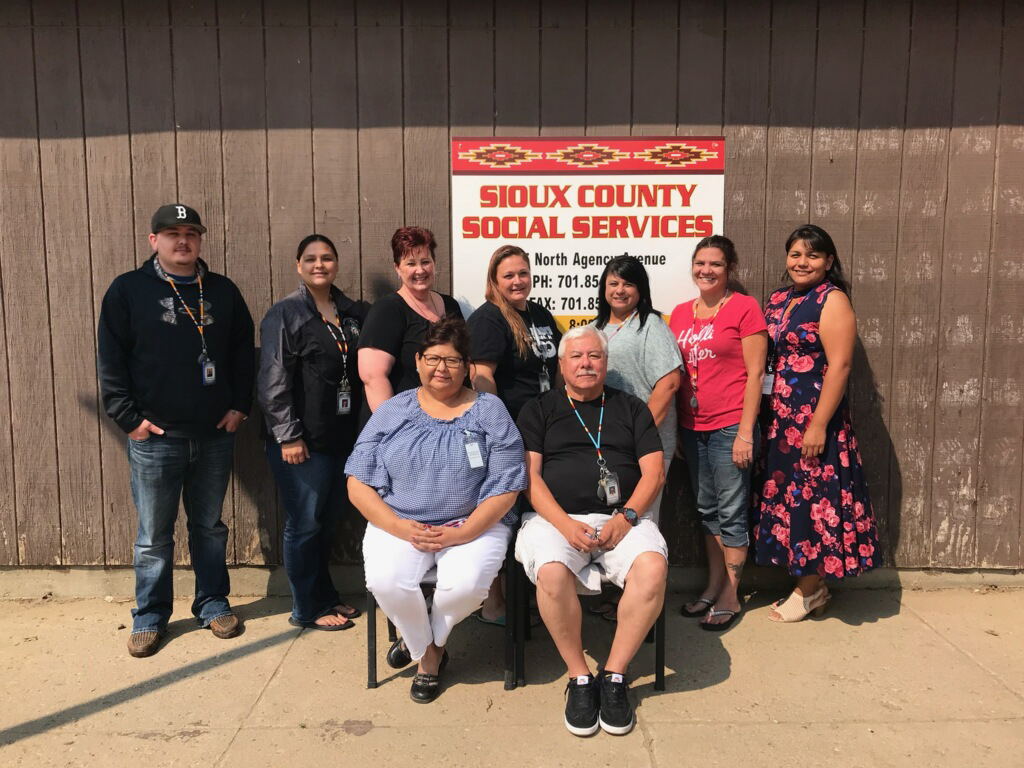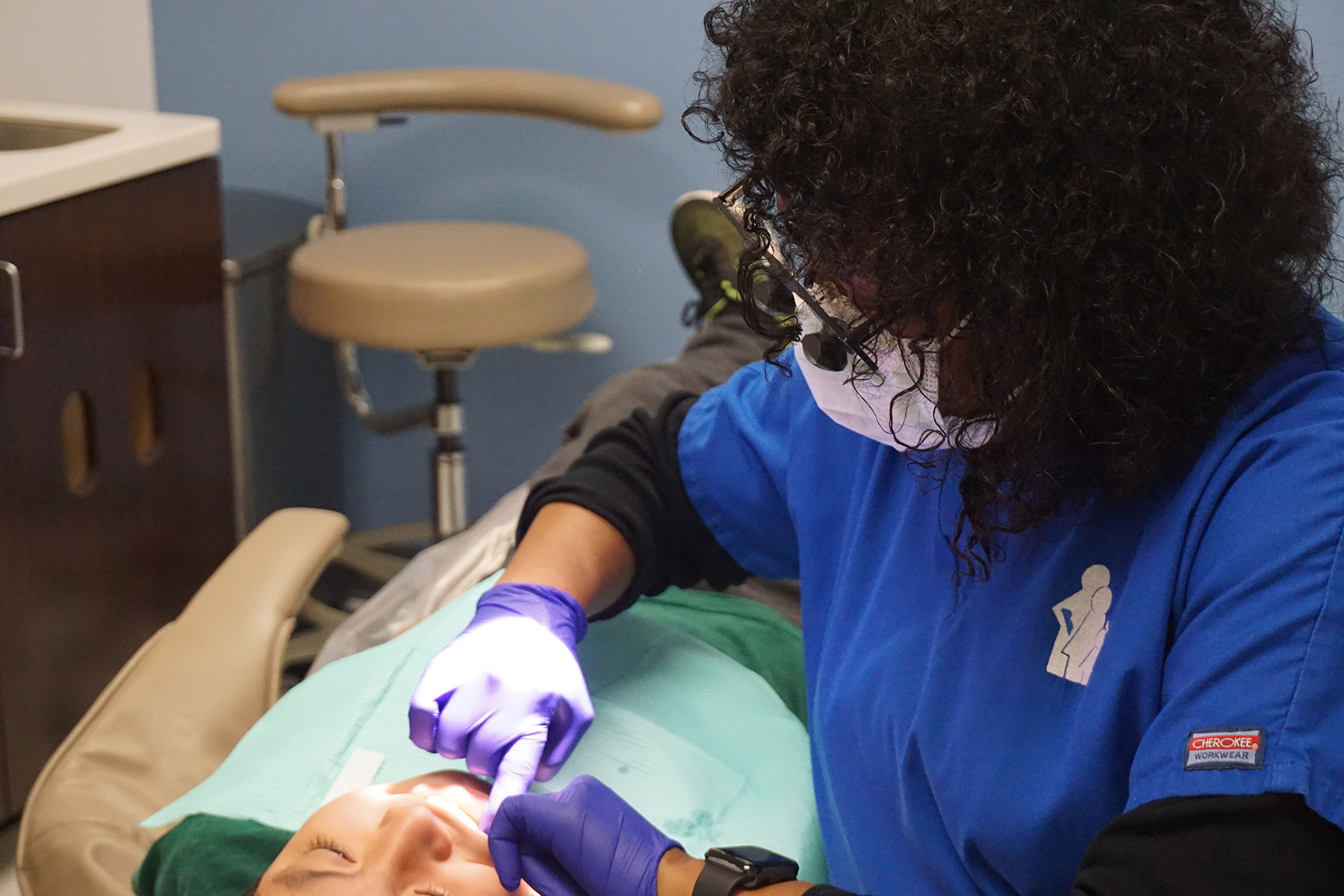Innovations in Addressing Rural Poverty: Counties Connecting Residents to Services
Author

Blaire Bryant
Upcoming Events
Related News
Background
Counties are deeply invested in their residents’ health and well-being, serving as a safety net for individuals and families living in poverty and investing in upstream solutions designed to prevent poverty for future generations. Recognizing that poverty operates across multiple systems and population levels, county leaders have adopted multigenerational approaches, seeking to disrupt the cycles and systems that keep families at risk. These innovative approaches are particularly important for residents of rural counties who may have limited access to resources and services. Counties are uniquely positioned for this work due to their natural proximity to the communities they serve and their established networks of service delivery across systems.
Counties work to combat multigenerational poverty and promote opportunities for residents in several ways:
- Direct investment in economic development activities, such as workforce development and training, small business support, infrastructure development and business recruitment. This investment empowers those living in poverty to change their circumstances and creates opportunities for counties to sustain their development in the long term.
- Administration of federal programming, including, the Supplemental Nutrition Assistance Program (SNAP), the Temporary Assistance for Needy Families (TANF) program and Medicaid. Though administration of these programs varies by state, counties are often required to operate federal programs at the local level. In fact, counties invest over $58 billion dollars annually in human services, serving on the frontline as a safety net for families in need.
- Providing family and community support. Recognizing that poverty operates at multiple levels within families and communities, counties invest in supplemental child care and other services that help strengthen a child’s environment and relieve financial pressure.
Through a generous grant from the Annie E. Casey Foundation, NACo provided opportunities for county leaders to learn more about whole family approaches to alleviating poverty and the resources and partnerships needed to successfully implement their programming. At NACo meetings and events throughout 2017 and 2018, county officials discussed critical issues and key policies pertaining to poverty, rural vitality and well-being, recognizing the strain that multigenerational poverty inflicts not only across population levels, but across systems.
The programs highlighted herein illustrate the breadth of possibilities for county leaders seeking to improve quality of life for the underserved in their communities. While these counties have taken different approaches to address poverty, many common themes can be found across programs:
- Innovative partnerships: The highlighted counties have forged and leveraged relationships with community, federal and private partners to expand capacity and better allocate existing resources.
- Data collection and analysis: Many of these counties have instituted rigorous needs assessment and evaluation processes to ensure that their programming is effectively addressing the needs of their target populations.
- Systems approaches: These counties aim not only to serve those currently living in poverty, but also to dismantle the systemic barriers that keep individuals and families in cycles of poverty.
|
Adams County, Pa. |
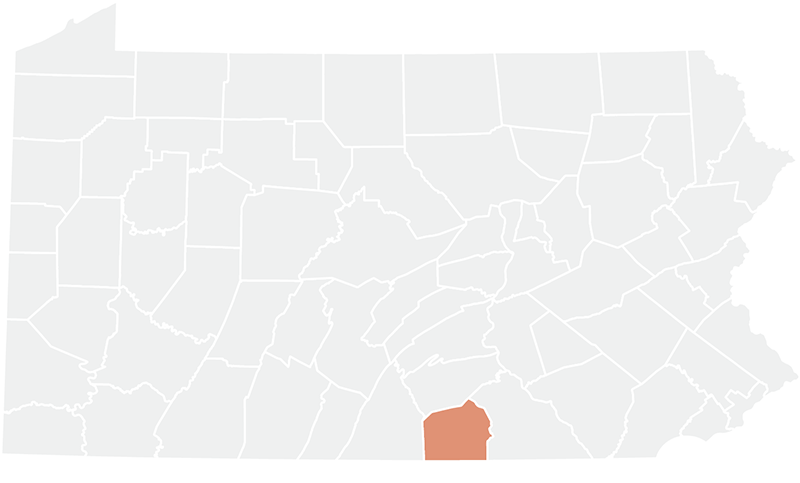
- 2017 Population: 102,300
- 2016 Unemployment Rate: 4.0%
- 2016 SNAP Recipient Households: 2,982
- 2016 Poverty Rate: 9.4%
- 2016 Childhood Poverty Rate: 14.0%
Overview
The Adams County Board of Commissioners established the Healthy Adams County Food Policy Council by proclamation in 2009 with the stated vision of ensuring that all Adams County residents can access safe, nutritious and affordable food within a sustainable system that promotes the local economy.
Solutions
- Healthy Adams County provided a “Veggie Bucks” program for SNAP participants, providing a 50 percent discount on all fresh fruits and vegetables sold through a partnership with a local grocery store—Kennie’s Market. Veggie Bucks could be applied to the five highest cost produce items at the point of sale. Through this program, the county sought to increase the number of healthy foods purchased by SNAP recipients and helped familiarize participants with fresh fruits and vegetables. The program was provided during the winter months of 2017 and 2018.
- The Food Policy Council established the Healthy Options Voucher Program to increase food security for residents in the food gap—individuals and families who are living on the cusp of SNAP eligibility (within 160-250 percent of poverty level). Through this program, participants receive $45 per month to use in the Adams County Farmer’s Market. During the winter months, participants can use their vouchers at Kennie’s Supermarket. Participants also receive nutrition education as a part of this program.
- The Adams County Farmer’s Market matches up to $15 daily in SNAP benefits, doubling participants’ buying power for healthy foods.
- The Adams County Food Policy Council works to increase accessibility to sustainably produced foods by not only supporting local farm-to-institution programs but also by educating residents on the value of a local food system.
“We have a lot of families who are really grateful. They believe their kids are receiving healthy options, which is most important. Participants have become more social as well, getting to know the other families. It’s a plus on all sides for that.”
- Katherine Gaskin, Executive Director, Healthy Adams County
Successes and Outcomes
- Approximately 70 percent of Veggie Bucks program participants reported increased fruit and vegetable consumption and over 30 percent tried new fruits and vegetables through the program.
- Healthy Adams County reports a 96 percent redemption rate for Healthy Options vouchers, with 75 percent of voucher funds spent on fruits and vegetables.
Tips for Other Counties
- Develop partnerships before you begin. Involve stakeholders in your vision from the beginning to ensure that your goals are aligned from the outset.
- When it comes to goal setting, quality trumps quantity. Set one or two feasible goals. This tip is especially salient for rural counties that may lack capacity.
(Top of section) Family browsing fruit at the Adam’s County Farmer’s Market - Photo courtesy of Healthy Adams County.
|
San Juan County, Utah |
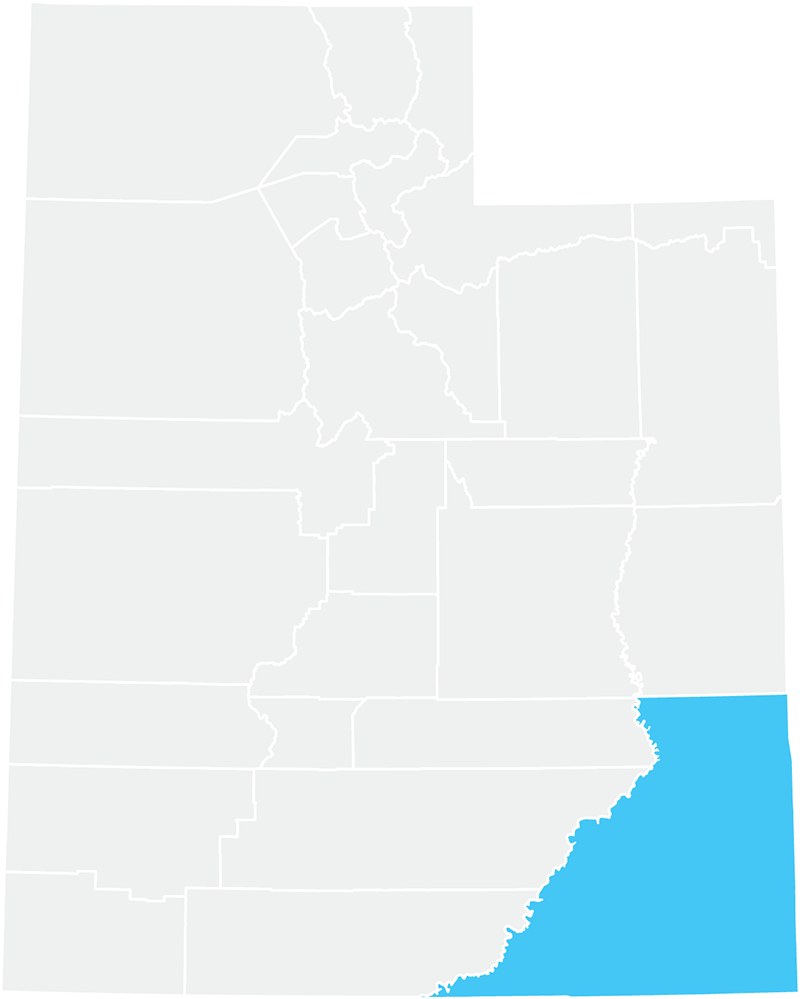
- 2017 Population: 15,400
- 2016 Unemployment Rate: 8.0%
- 2016 SNAP Recipient Households: 677
- 2016 Poverty Rate: 31%
- 2016 Childhood Poverty Rate: 32.5%
Overview
San Juan County collaborates with a variety of partners, using a whole- family approach to alleviate poverty and health disparities, particularly among the large Native American population in the county.
Solutions
- Assistance from federal Rural Integration Models for Parents and Children to Thrive (IMPACT) grant helped the county and key partners such as the San Juan Foundation to introduce and implement a two-generation approach to address poverty in the county, largely targeting Native American communities and focusing on educational opportunities.
- A group of over 30 key local partners and stakeholders united to form a county committee charged with developing and implementing a plan of action to increase upward mobility and well-being in the county. This action plan was developed in 2017 and identified four pillars of focus: early childhood education/ development, college partnerships/adult education, linking job creation and workforce training, and health.
“Native American communities in our county and across the country continue to experience poverty, but are rich in culture and heritage. So that is an opportunity and good place to start in working to build trust and in striving to reach self-sustainability in these communities. That’s the goal–not continue to be reliant on one grant after another.”
- Rebecca Benally, San Juan County Commissioner
Successes and Outcomes
- San Juan United initiative has worked to directly assist 20 families and 300 K-12 age students.
- Early childhood pillar: Developed needed, quality preschool program within targeted Native American communities
- Health pillar: Utilized data to identify K-12 schools in the county with high rates of generational poverty-affected students. Behavioral health staff are now based out the identified schools to connect students and their families to services.
- College partnerships and workforce development pillars: Utah State University (USU) Eastern’s branch campus in San Juan County focused efforts on its adult education program to provide training, certifications, and degrees necessary for stable employment and in-demand jobs. USU Eastern’s San Juan campus now awards over 230 associate’s, bachelor’s and master’s degrees annually, with over two-thirds of these graduates being Native American.
Tips for Other Counties
- Break down silos. Communication and data sharing—not just within your county, but also county-to-county throughout the region and state—can lead to better decision-making and improved services.
- Tell your story. County leaders have an opportunity to work together to raise issues concerning intergenerational poverty to the forefront in your state and nationally.
|
Arapahoe County, Colo. |
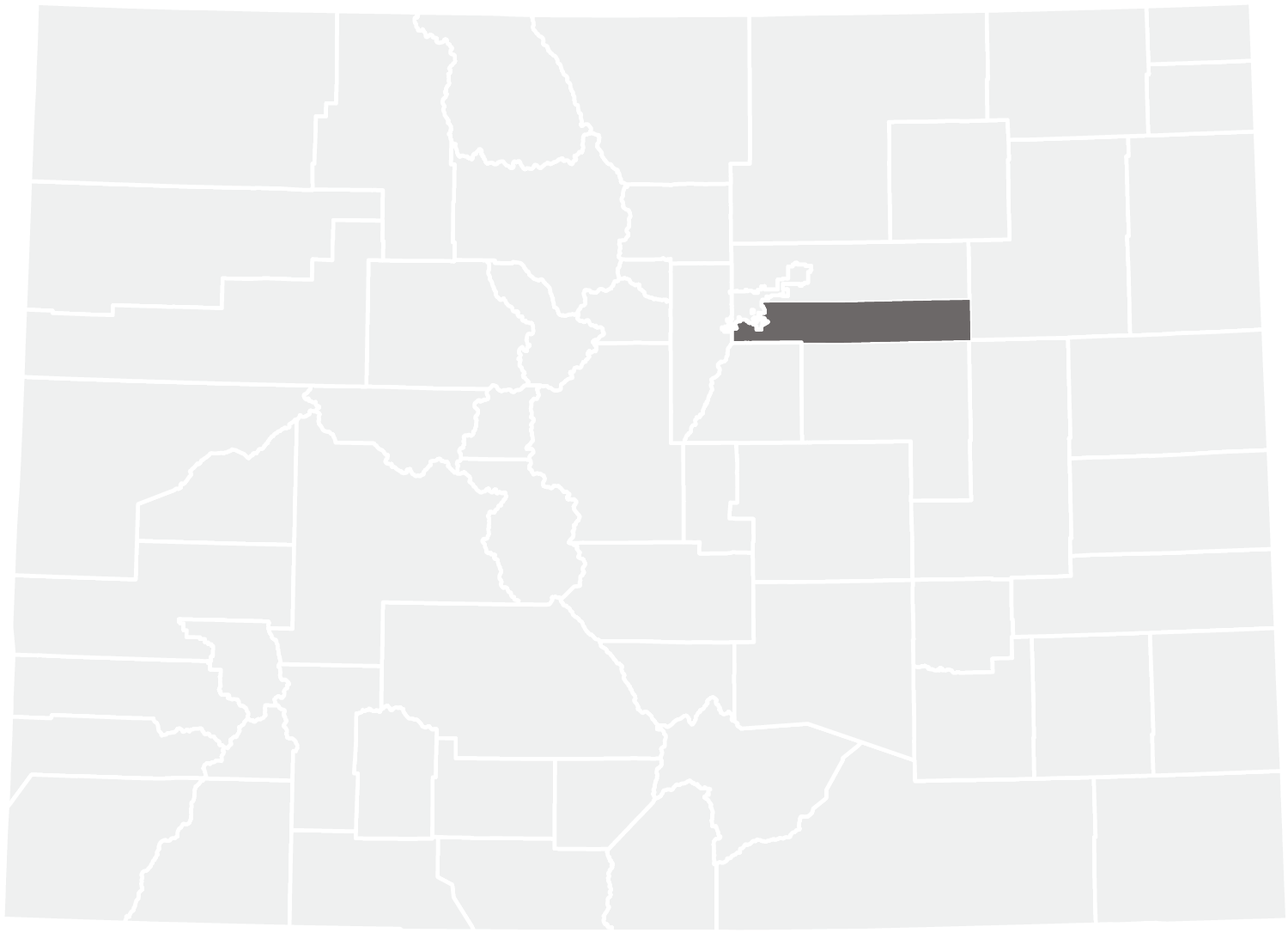
- 2017 Population: 643,100
- 2016 Unemployment Rate: 3.1%
- 2016 SNAP Recipient Households: 17,700
- 2016 Poverty Rate: 9.0%
- 2016 Childhood Poverty Rate: 11.6%
Overview
Much of Eastern Arapahoe County is rural, and residents face challenges accessing programs and services. The Arapahoe County Department of Human Services (DHS)—and sister agency, Arapahoe/ Douglas Workforce Center— provides a robust suite of programming to help both TANF-active and TANF-eligible residents escape the cycle of generational poverty and reach economic independence.
Solutions
-
Arapahoe County’s GOALS (Generational Opportunities to Achieve Long-term Success) program provides transitional housing (4 to 9 months) to address the needs of vulnerable children and their parents in the county. Focusing on early childhood education, social capital building, health and well-being and economic assets, the county utilizes existing resources to ensure that families can meet their basic needs during the transition period. Participants also receive a year of follow-up and support after leaving the housing program.
-
Through its Parents to Work Program, Arapahoe County DHS utilizes TANF funding to assist parents in addressing barriers that have caused un/under-employment. The county offers supportive services, such as parenting classes, court mediation services, free legal clinics, GED classes, domestic violence classes, substance abuse classes, and employment services.
-
Arapahoe’s Post-Secondary Education Program provides teen parents with transportation and tuition assistance through a charter school that covers childcare needs while providing a high school education to the young parents. The county assists in providing buses to eliminate transportation barriers for participants. The county also worked with the local community college and a major university to offer concurrent enrollment opportunities, assisting with tuition costs for the completion of the certification or degree obtainment.
-
Kinship care provider supports are an important part of Arapahoe County’s poverty programming, as the county strives to ensure that every child in its jurisdiction is secure in the areas of food, medical coverage and housing. The county provides additional financial and supportive services these providers, often grandparents and other relatives, to stabilize the home and reduce the likelihood that the child will drop out of high school.
“I am amazed at how successful people are, on both sides of the table, when we learn to give them the tools to succeed and then get out of their way to achieve their own success.”
- Robert Prevost, Deputy Director, Arapahoe County Department of Human Services
Successes and Outcomes
- On average, residents are on TANF for only 53 days before gaining full-time employment.
- 2018 statistics through August 31 showed:
- 157 full-time employment outcomes
- 71 part-time employment outcomes, with an average starting wage of $15.66 per hour in August 2018
Tips for Other Counties
- Involve community partners. Many community partners will provide services at no cost or low cost. As such, partnerships can increase capacity without increasing costs.
- When possible, have all services located at your office. The easiest way to lose a potential program participant is by sending them elsewhere.
- Incentivize participation and completion of programs. A small gift card, certificate of acknowledgment, award ceremony, etc. can oftentimes motivate participants to continue their progress.
- Acknowledge staff. Just as it is important to acknowledge the efforts of those who receive services, recognizing staff members who go above and beyond is equally important. Beyond the typical staff awards, counties can allow peer-to- peer support and training through shadowing exercises—this will not only provide recognition, but also train others on the importance of each job.

Wilson County, N.C. |
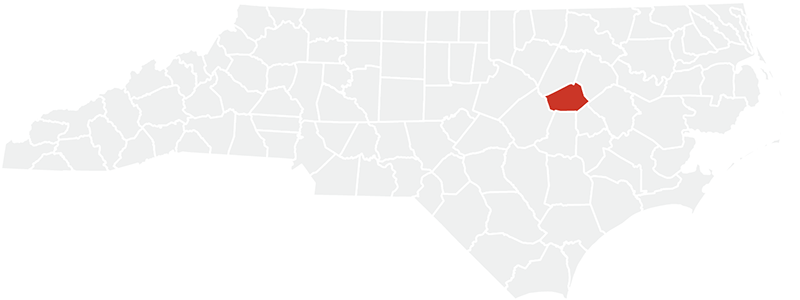
- 2017 Population: 81,700
- 2016 Unemployment Rate: 8.1%
- 2016 SNAP Recipient Households: 6,118
- 2016 Poverty Rate: 22.3%
- 2016 Childhood Poverty: 35.8%
Overview
The Wilson County Department of Social Services works to increase the efficiency of service delivery to better promote safety, self-determination and self-sufficiency for the residents in Wilson County, N.C. The department emphasizes a caring approach to service delivery, working intentionally to create a culture of compassion that is exemplified in every facet of the organization.
Solutions
- Wilson County has developed a “Self-Service Express Center” to increase the efficiency of SNAP and Medicaid applications and decrease caseworker burden. Recognizing that many individuals and families need both programs, the county worked with a programmer to develop a joint application for SNAP and Medicaid services to further streamline the application process.
- The department created a call center to better address client needs. The dual goal of the call center is to efficiently resolve client and applicant issues and connect callers with a “real voice.” The department is constantly evaluating the call center to improve service delivery and reduce wait and service times.
- The county designed a built environment that is more conducive to efficient, comprehensive delivery of services. The building redesign will allow participants to see case workers in the department’s lobby for quick-paced, “one-and-done” transactions— including first-time applications, changes to existing services, and recertification.
- Established a “Ticket-to-Work” job fair at which individuals who have been designated as “ready to work” by a social worker or community partner can seek employment. The department also provides after-placement coaching to increase the likelihood that participants will remain employed.
“Over the years, we have fostered a spirit of continuous quality improvement and innovation within our culture here.”
- Glenn Osborne, Director, Wilson County Department of Social Services
Successes and Outcomes
- Approximately 77 percent of SNAP and almost 60 percent of Medicaid walk-ins utilize the self-service kiosks. Caseworkers have started using the joint application for their one-on-one services and report that it cuts their time with clients by 50 percent.
- The call center resolves 80 percent of call-in customer needs.
- The Wilson County Department of Social Services has reported an 80 percent reduction in TANF participation in the county.
Tips for Other Counties
- Be mission-driven. Create a simple, clear mission statement that your employees and partners can understand and champion.
- Focus on outcomes. Once you have your organization aligned under one mission, determine clear indicators for success and build mechanisms for evaluation into your programs and initiatives.

Olmsted County, Minn. |
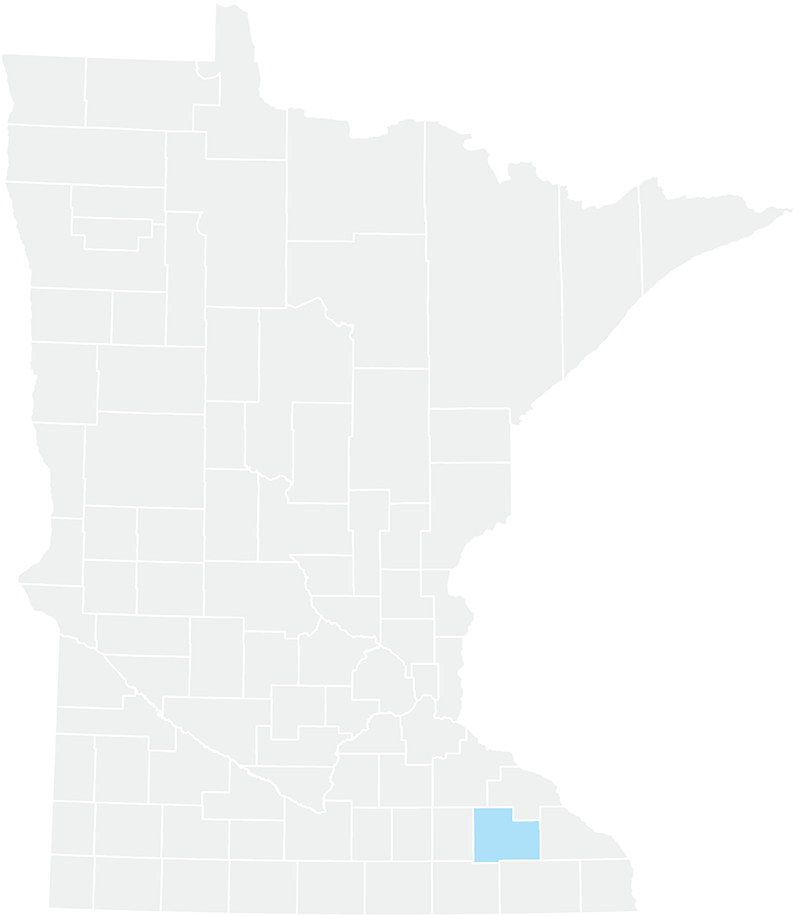
- 2017 Population: 154,900
- 2016 Unemployment Rate: 3.0%
- 2016 SNAP Recipient Households: 4,690
- 2016 Poverty Rate: 8.6%
- 2016 Childhood Poverty Rate: 9.9%
Overview
Recognizing that their community is strongest when everyone has the opportunity to live well, be healthy and reach their fullest potential, Olmstead County sought to create a new pathway to self-sufficiency through a culture of integration and systems alignment.
Solutions
- Olmsted County integrated their Public Health, Corrections, Housing Authority, Veterans Services, Child & Family Services, Family Support & Assistance, and Adult & Family Services departments all into one division—the Health, Housing & Human Services Division—as a new approach to providing support and moving people out of poverty more effectively.
- The county is developing a national pilot program—Pathways to Prosperity—that uses three new, human-centered tools: The Integrated Service Assessment Tool (ISAT), the Economic Stability Tool, and a cliff calculator. Together, these tools are designed to help people entering the support system to reach stability and thrive.
- Through this pilot program, foundation funding is also being identified to create a ‘shadow system’ of support, to minimize reliance on federal and state program support.
- The county is also partnering with the Minnesota Economic Development Office to develop employment pathways for individuals to find stable jobs in the private sector through the nearby Mayo Clinic, and through job training and placement within Olmsted County and the Health and Human Services Division.
“We don’t believe in a poverty prison. We believe in an integrated systems pathway to help unlock people out of poverty and move them forward toward reaching their full potential.”
- Paul Fleissner, Deputy County Administrator, Olmsted County Health, Housing & Human Services Division
Successes and Outcomes
- The county is working with 100 high-risk families to build universal pathways to prosperity.
- Nine high-risk women already receiving support are currently enrolled in college.
- Integration of the Housing Authority with Health and Human Services programs helped lead to the development and opening of The Empowerment Center and Gage East Apartments, a redevelopment of a former school into a co-location site for low- income and homeless youth and families. Gage East Apartments provide 55 units for homeless or at-risk youth, while the Empowerment Center will focus on early childhood and youth development support, mental health, transportation and job training to set these individuals on paths to stability and success.
Tips for Other Counties
- Complete, don’t compete. Removing silos and integrating across county services and systems can be critical for programs and supports to ultimately work best for individuals and families. Families do not care which department, team, or staff receives or takes credit.
- Utilize and learn from peers in other counties. Leaders from counties with existing, innovative programs are often excited to help share their approaches and resources. Modeling programs after fellow counties can be a valuable kickstart into developing new county programs across the country.

Herkimer County, N.Y. |
- 2017 Population: 62,200
- 2016 Unemployment Rate: 5.5%
- 2016 SNAP Recipient Households: 4,460
- 2016 Poverty Rate: 16.3%
- 2016 Childhood Poverty: 23.7%
Overview
Herkimer County’s approach to poverty prioritizes social determinants of health and intervention across the lifespan. Through the county’s continuous needs assessment process, county leaders have identified three primary strategies to achieving sustainable economic wellness for its residents: increasing the availability of quality affordable childcare, increasing the number of children who are ready for kindergarten and increasing opportunities for disconnected youth (youth age 16-24 who are not in school and not working).
Solutions
- Herkimer County began its Integrated County Planning (ICP) Process in 1998 to increase stakeholder involvement in county processes. ICP emphasizes collaborative identification of needs and priorities, development and implementation of strategies that maximize capacity and continuous measurement of program and population-level outcomes. Currently, over 80 organizations in various sectors participate in the ICP.
- The county established the Opportunity Youth Leadership Team to ensure that youth have the education and skills necessary for self-sufficiency as adults, and to promote technical jobs and skills development at an early age and develop employment opportunities that incorporate education and skill development. The team has focused on analyzing relevant data, developing skill-building initiatives and identifying best practice programs that combine education and on the job training.
- In their work to improve outcomes in early childhood, Herkimer County’s Best Start Committee identified two primary strategies for intervention: increasing availability of quality affordable childcare and increasing the number of children who are ready for kindergarten. The county is currently working with the local community college and other local organizations to build a 60-slot childcare facility. Through Best Start, the county is also working to secure buy-in from the business community and develop a plan to serve young children who are at-risk of entering the foster care system to promote family economic stability and promote kindergarten readiness.
- Herkimer County leaders intentionally built community participation into their work with youth through their Youth Task Force. This task force creates a forum for open communication between youth in Herkimer County and the county leaders who seek to serve them. Through the task force, the county plans to create streamlined referral processes to life skill and employment skill building programs that promote self-sustainability for youth. The task force will also establish referral procedures and ongoing communication processes between programs and services and identify and implement cross-training activities to improve knowledge of youth needs and available resources.
“Our employment landscape has changed, and we are at a critical point to engage business leaders to partner with us to address these important social determinants of health and well-being that impact our communities. We are at an exciting time where there is a tremendous amount of momentum to take action. As a result of our processes already in place, I believe that we can truly make a difference for our kids, families and communities.”
- James W. Wallace Jr., County Administrator, Herkimer County, N.Y.
Successes and Outcomes
- The county has seen over a 50 percent reduction in foster care placements and a 70 percent reduction in the use of detention care days for juvenile delinquent youth or Persons in Need of Supervision (PINS).
- Bullying prevention programs, training and services in all Herkimer County school districts reach over 7,000 youth per year and has helped reduce the number of youth self-reporting being teased, threatened and harassed by half.
- The opening of satellite Mental Health Clinics in three school districts/communities across Herkimer County has expanded supports and services to underserved locations in the county.
- Over 50 youth involved in the juvenile justice or preventive services system have been referred for assessment, training and support services through the Life Skills Program. Over 30 youth were referred to summer youth employment opportunities.
Tips for Other Counties
- Involve youth, families and the community as much as possible. Bring diverse voices to the table.
- Identify community needs—and meet them. Adhere to a strict risk and resource assessment process, intentionally setting goals and strategies and measuring outcomes over time.
- Celebrate successes. Take time to celebrate accomplishments—both big and small.

Eastern Shore, Md. |
Caroline, Cecil, Dorchester, Kent, Somerset, Talbot, Wicomico, Worcester and Queen Anne’s Counties
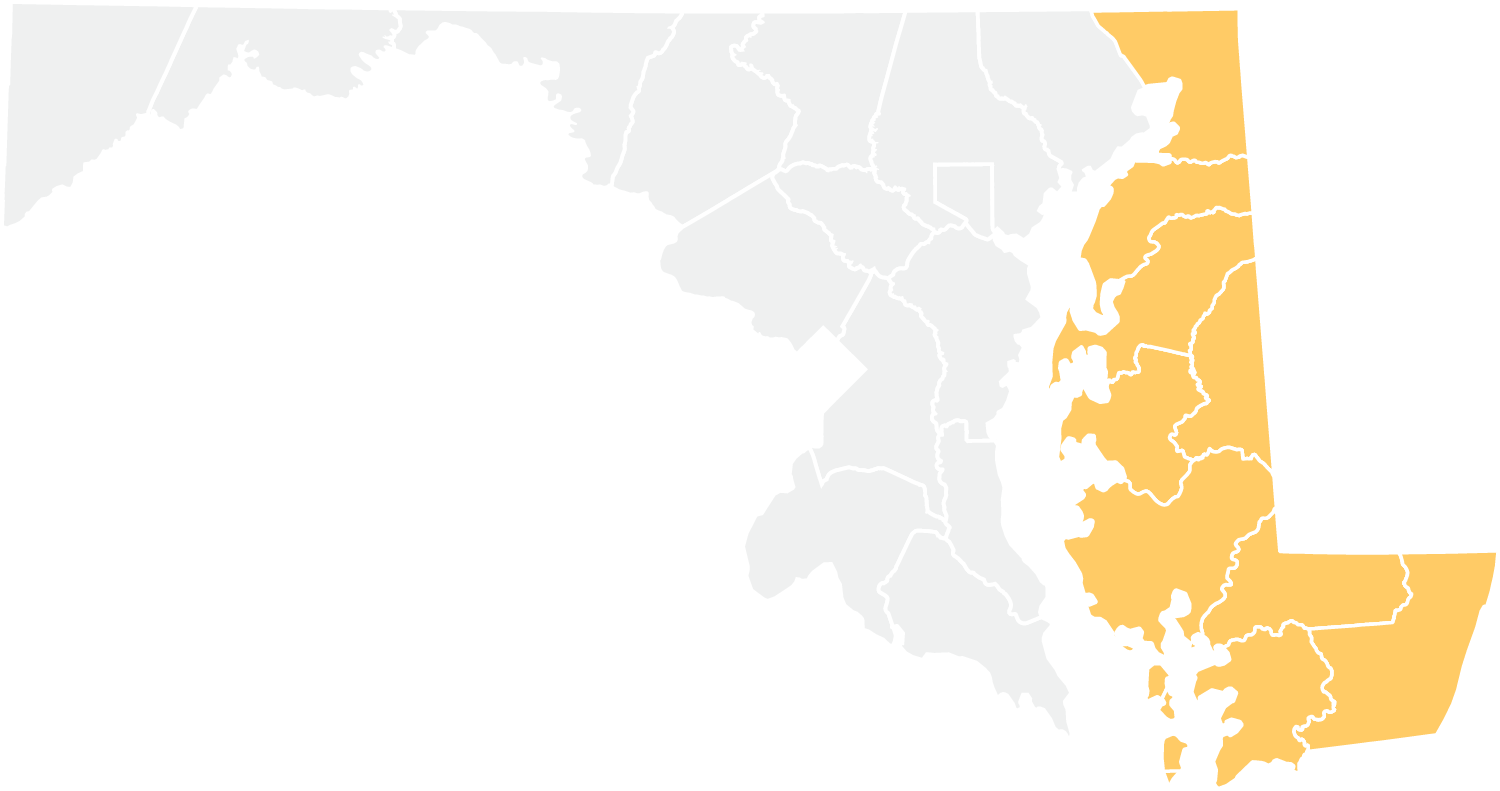
- 2017 Population: 19,400 - 102,900
- 2016 Unemployment Rate: 3.8% - 9%
- 2016 SNAP Recipient Households: 1,119 - 5,738
- 2016 Poverty Rate: 7.3% - 24.3%
- 2016 Childhood Poverty Rate: 9.4% - 31.9%
- *Ranges for all 9 counties in the Eastern Shore region
Overview
Working with nine counties in rural Maryland—Caroline, Cecil, Dorchester, Kent, Somerset, Talbot, Wicomico, Worcester and Queen Anne’s counties— the Eastern Shore Area Health Education Center (ESAHEC)’s Children’s Regional Oral Health Outreach Program provides oral hygiene and disease prevention education to underserved children. The program aims to both decrease incidence of tooth decay and increase utilization of prevention and oral health care services in this population, thus removing a significant barrier to school success and healthy living for children—many of whom are from low-income families and enrolled in Medicaid.
Solutions
- The Dorchester County Health Department and ESAHEC convene an oral health workgroup to provide continuing professional development for dental health professionals and students, increasing capacity to engage patients on the front line. Through the workgroup, community leaders work to identify systemic challenges and strategize about solutions to improve service delivery in the community. The workgroup also connects students with dental clinics, addressing the shortage of dental health professionals in the Eastern Shore.
- ESAHEC also collaborated with the Dorchester County Health Department to provide new and expectant mother kits to 61 women and works with other county governments, county health departments and community members to extend their reach throughout the Eastern Shore.
- Through ESAHEC’s Tooth Fairy’s Helper (TFH) program, a Registered Dental Hygienist visits elementary school students to illustrate the importance of proper oral health care. The “Tooth Fairy’s Helper” uses props and puppets to demonstrate proper brushing and flossing techniques and sings songs to capture students’ attention. Presentations are given in English and Spanish to remove language barriers. All participants receive Tooth Fairy’s Helper kits, which include a toothbrush, toothpaste, dental floss, a coloring book, an Office of Oral Health informational brochure, a list of local resources/dentists and a list of local Federally Qualified Health Centers.
“The positive feedback we’ve gotten from the kids has helped us to engage students and teachers in not just learning about oral health, but also health and wellness in general. The Tooth Fairy’s Helper has catchy songs that she sings to get the message across, and the kids go home and relay that message to their parents.”
- Jennifer Berkman, Deputy Director and Continuing Education Coordinator, Eastern Shore Area Health Education Center
Successes and Outcomes
- As of 2017, ESAHEC’s oral health education programming has reached over 5,700 individuals and the team has distributed over 4,000 oral health care kits.
- Through the Tooth Fairy Helper Program, ESAHEC has completed 138 presentations and visited a total of 39 schools. Thirty-two of these schools are designated Title I, meaning most their students come from low-income households.
Tips for Other Counties
- Connect with your local health departments. Local health departments often engage in community outreach and can help you build relationships with other partners who do work around oral health.
- Understand healthcare costs. Community health needs assessments can inform the top health priorities for your community. Connect with the places that do these assessments— such as local health departments or local health improvement coalitions to better understand the costs associated with the identified health priorities.
- Get state decision-makers involved. It is especially important for rural and high poverty areas to educate legislators on their communities’ specific issues. Find ways to turn data into compelling stories to secure investment.
(Top of section) The Tooth Fairy’s Helper giving a demonstration on oral health care to schoolchildren - Photo courtesy of the Eastern Shore Area Health Education Center.

Primewest Health |
Beltrami, Big Stone, Clearwater, Douglas, Grant, Hubbard, Mcleod, Meeker, Pipestone, Pope, Renville, Stevens and Traverse Counties, Minn.
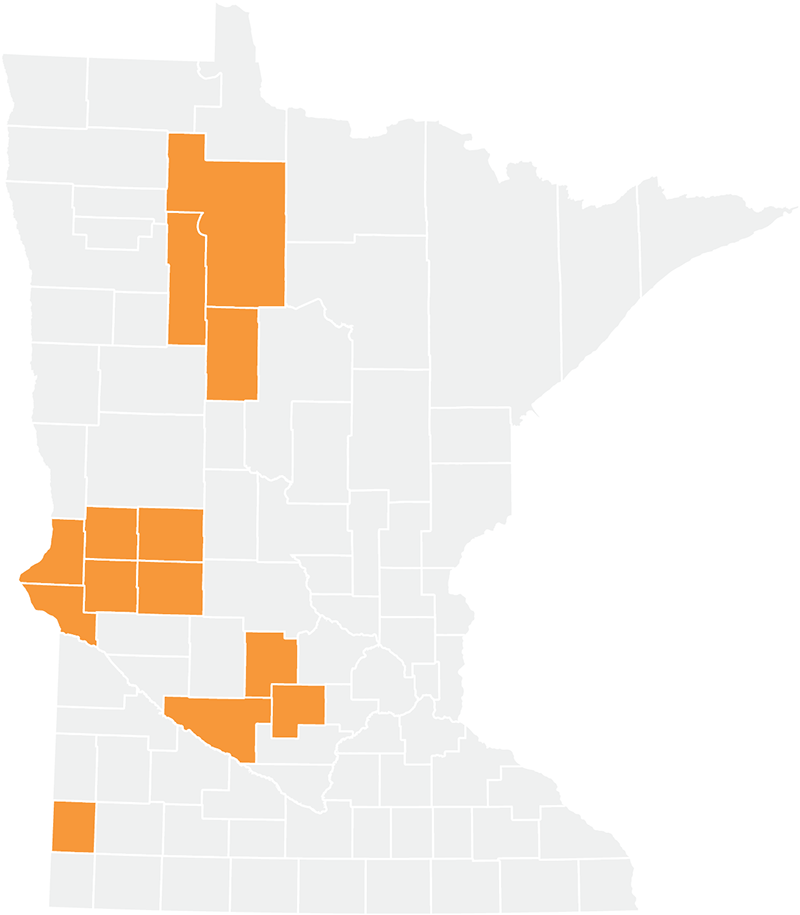
- 2017 Population: 5,026 - 46,500
- 2016 Unemployment Rate: 3% - 9.6%
- 2016 SNAP Recipient Households: 154 - 2,330
- 2016 Poverty Rate: 7.1% - 18.3%
- 2016 Childhood Poverty Rate: 9.5% - 24.8%
-
*Ranges for all 13 counties
Overview
The PrimeWest Health Joint Powers Board (JPB) is comprised of commissioners from 13 counties in rural Minnesota— Beltrami, Big Stone, Clearwater, Douglas, Grant, Hubbard, McLeod, Meeker, Pipestone, Pope, Renville, Stevens and Traverse counties—who act as one entity to administer a County-Based Purchasing health plan (CBP). Through this CBP, PrimeWest finances healthcare and human services for over 41,000 residents, the majority of whom are enrolled in Medical Assistance—Minnesota’s Medicaid program for people with low-income. PrimeWest’s unique county ownership structure allows for integration and coordination of medical care, health care payment and county social services in a manner that recognizes social determinants of health and prioritizes the unique needs of the rural communities they serve.
Solutions
- PrimeWest’s JPB consists of two commissioners from each of the 13-member counties—one primary member and one alternate. Although primary members govern the board, alternates are heavily involved in JPB processes, which allows for consistency in training and limits turnover. If a governing member does not win re-election, his or her alternate is already integrated into the decision-making process and is knowledgeable of managed care best practices. In this way, sustainability is built directly into the structure of the JPB.
- The PrimeWest counties reinvest their surplus dollars directly into community programs to boost rural Minnesota’s health infrastructure and expand access to care locally. The JPB has provided grant funding and technical resources for a number of health ventures—from new dental and behavioral health clinics to obstetrics technology—to improve care and attract medical personnel to the area. The JPB places a particular emphasis on funding grassroots, community-led initiatives, recognizing that the most effective programs are often incubated at the community level.
- PrimeWest’s integrated service model encourages medical professionals to work directly with social service providers to provide patients with individualized care plans that address their most pressing medical and social needs. Patients who are grappling with social impediments to health, such as homelessness or food insecurity, are referred to county caseworkers who are trained to address their most critical needs. This model allows for a more holistic approach to healthcare delivery.
- Investment in technology has allowed the PrimeWest counties to expand their reach and deliver care more cost-effectively. Recognizing the value of telemedicine for rural areas, PrimeWest has helped to establish remote connections to behavioral health services in some primary care clinics in the region. This service enables patients who have been diagnosed with mental health issues to see mental health providers remotely during their primary care visits. Likewise, primary care physicians can use this technology to connect with other caregivers or state mental health resource providers. PrimeWest also provides community case workers with laptops and internet hotspots to ensure that service providers can work efficiently and access patient care plans while working in the field.
“That’s the secret sauce with PrimeWest’s success: you’re taking a health insurer’s responsibility—in terms of paying for healthcare services, managing it, making sure appropriate care is given—and combining that with county responsibilities for social services and public health. That makes it easy for us to integrate [care] with the medical community and align medical services, public health services, social services around the need of the individual. So, PrimeWest has been working on social determinants of health before they even came up with the term ‘social determinants of health.”
- James W. Wallace Jr., County Administrator, Herkimer County, N.Y.
Successes and Outcomes
- After identifying a substance use crisis among pregnant mothers in the Red Lake Nation, an area located within the northern Minnesota counties, PrimeWest Health funded a $1.6 million grant to allow Beltrami County Public Health and Human Services and the Indian Health Service to address the rising rates of fetal alcohol and neonatal abstinence syndromes in the area.
- PrimeWest Health has contracts with over 11,000 providers in Minnesota, and parts of North Dakota, South Dakota, and Iowa. This large network has helped to mitigate the widespread access issues in the region. In addition to contracting with providers, PrimeWest also has agreements in place with transportation providers to ensure that clients can are able to attend appointments.
Tips for Other Counties
- Connect with your local public health and human services agencies. These agencies are actively involved in their communities and can serve as great educational resources in your efforts to implement Medicaid programs at the local level.
- If you do not already have a joint powers law, create one! With a law like this in place, counties can achieve economies of scale by combining resources and, in the case of Medicaid, enrollment numbers. This allows county governments to enter into joint ventures and to accomplish what they may not have the capacity to accomplish separately.
- Enact a county-based purchasing law. Through CBP, counties can become managed care organizations and run their own Medicaid programs.
|
Sioux County, N.D. |
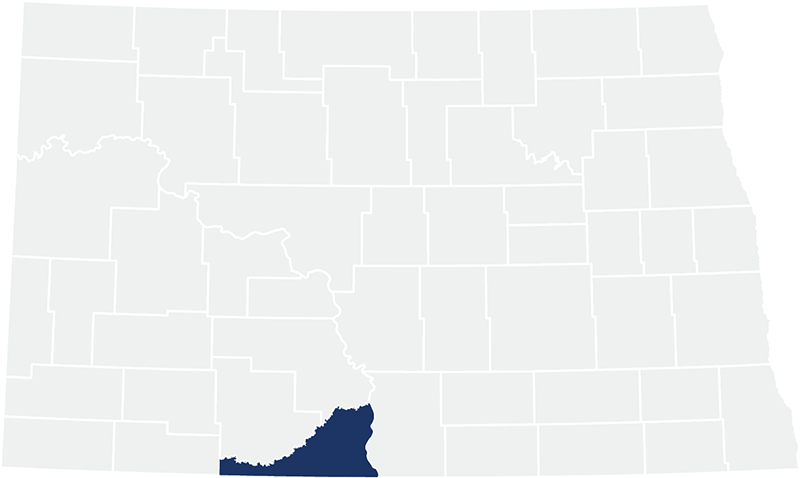
- 2017 Population: 4,376
- 2016 Unemployment Rate: 4.4%
- 2016 SNAP Recipient Households: 325
- 2016 Poverty Rate: 35.3%
- 2016 Childhood Poverty: 40.3%
Overview
Sioux County—a rural county completely encompassed by the Standing Rock Indian Reservation— is working to implement strategies and processes that improve efficiency and effectiveness of current SNAP, TANF and Medicaid programming and increase the availability and accessibility of services for residents in a county that is grappling with poverty.
“Accessibility is a big problem due to lack of transportation and the rurality of the county. That is an issue, getting people in. We have to think of ways to work around that... If [residents] call in, we have our most experienced eligibility workers answer the phone, so they can answer any question a person asks about their case.”
- Vincent Gillette, Director of Sioux County Social Services
Solutions
- The Sioux County Social Services Department is implementing a process management system, which decentralizes caseload responsibility by allowing all caseworkers to have access to electronic case files, where they can input, share and retrieve case specific information at any time.
- The department is working to streamline their automated case management system by switching to a data system which will cut down on having to duplicate case information across multiple data systems.
- The county has established a satellite social services office in Cannon Ball, North Dakota, to improve resident accessibility to services. Additionally, all three Sioux County Districts have offices that are available for residents to use computers, phones and fax machines. Residents are also able to make and attend appointments by phone.
(Top of section) Staff members of Sioux County Social Services. Photo courtesy of Sioux County Social Services.
|
Catawba County, N.C. |
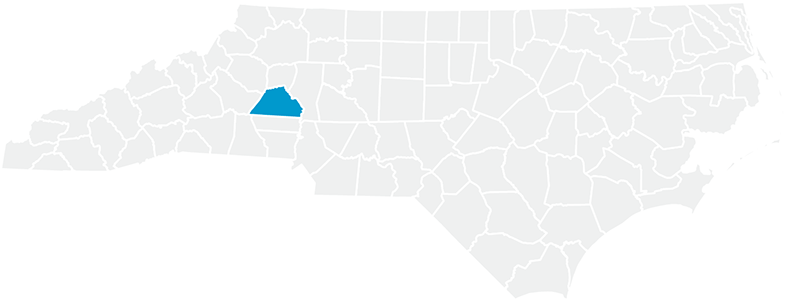
- 2017 Population: 158,000
- 2016 Unemployment Rate: 4.7%
- 2016 SNAP Recipient Households: 9,359
- 2016 Poverty Rate: 12.7%
- 2016 Childhood Poverty: 18.1%
Overview
In January 2017, the Catawba County Public Health Department (CCPH) partnered with a local dental facility to establish the Catawba County Childhood Health Outreach Program (CHOP). Through CHOP, the county works to increase the number of children and women enrolled in Medicaid who establish a dental home and receive regular oral health care.
Solutions
- CCPH partnered with the Catawba Family Dentistry (CFD), managed by a local federally qualified health center to more effectively address the issue of tooth decay among children. This collaboration allows the county to capitalize on shared resources, thus enabling the county to maximize the impact of their programming. Likewise, the recruitment of a second dentist has allowed the clinic to offer expanded hours and increase the availability of appointments. As a result, the clinic can reach more children and families in the county.
- CCPH works to eliminate systemic barriers to dental care for women and children by streamlining services and meeting Medicaid patients where they are. A dental coordinator works with each patient to identify and address obstacles that may prevent patients from making their appointments, such as lack of access to childcare or transportation.
- Catawba County has focused on increasing knowledge of Medicaid eligible dental services offered by the county health department. Their health approach to dental care and disease prevention for the parents, children and pregnant women visiting the health department’s WIC clinic encourages patients to think beyond dental hygiene to the other factors—like nutrition—that may influence oral health.
“It’s not always as simple as make an appointment and show up. Part of that coordinator’s role is figuring out what those [systemic] barriers are and working with that individual to get them to that appointment…. It’s a matter of helping [patients] learn how to navigate the system … How to figure out what options are available to them. And also help to allay fears, in a lot of ways.”
- Emily Killian, Community Engagement Specialist, Catawba County Public Health
Successes and Outcomes
- In 2017, 742 patients made appointments for dental services and 58 percent have kept those appointments.
- In August 2017, the dental clinic saw 148 children under age five, which is five times the number of children seen in August 2015. Fifty- five of those visits are a direct result of the WIC/CFD partnership.
- The success of the CHOP program has led to the creation of a similar program with Catawba Valley Medical Center-Maternity Services, a prenatal practice servicing Medicaid insured (and uninsured) women in Catawba County. Working in partnership with local hospitals, CCPH was able to add a dental coordinator to their clinic to help provide educational literature and make appointments easier for the women they serve. Sixty pregnant women have received dental care through this program so far.
Tips for Other Counties
- Take the time to build trust with partners. Know what your limitations are, what your partner limitations are and how to amplify each other’s strengths. Building solid partnerships allows you to bring on knowledgeable people with a wide range of skillsets.
- Build on the success of others. County leaders should actively seek out best practices in other jurisdictions and consider how they might incorporate those practices into their own programming and organizational policies.
|
AcknowledgmentsKiemesha Corpening, Program Manager for Health; Jack Morgan, Program Manager for Community and Economic Development; Nyana Quashie, Health Associate; and Blaire Bryant, Program Manager for Health researched and wrote this report, with guidance from Michelle Price, Associate Program Director, Health and Maeghan Gilmore, Program Director, Health, Human Services and Justice. The Annie E. Casey Foundation (AECF) has been an invaluable partner in NACo’s work to alleviate poverty in rural communities. We would like to extend a special thank you to leaders at AECF for their expertise and guidance, namely Rosa Maria Castaneda and Kit Judge. Annie E. Casey FoundationAs a private philanthropy based in Baltimore and working across the country, the Annie E. Casey Foundation makes grants that help federal agencies, states, counties, cities and neighborhoods create more innovative, cost-effective responses to the issues that negatively affect children: poverty, unnecessary disconnection from family and communities with limited access to opportunity. Since 1948, these efforts have translated into more informed policies and practices and yielded positive results for larger numbers of kids and families. Special thanks to the following individuals for providing their time and expertise:
|



